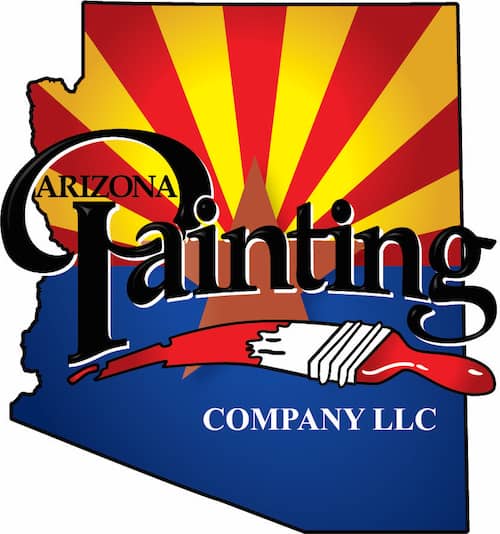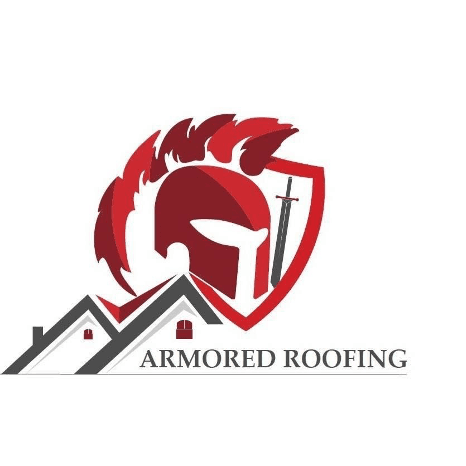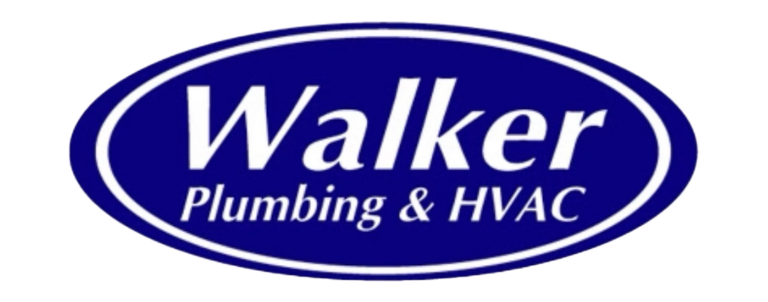How To Repair Drywall
Other than dings with the vacuum, moving things around, or mounting art and fixtures, drywall damage will occur. Water damage, stress cracks, and settling also cause drywall damage.
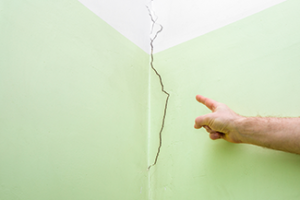 Stress cracks are caused by the movement of the structure. These cracks are characterized by several things; they grow longer and wider over time, they are wider than a pencil lead, and they emanate most often off the corners of doors and windows. These cracks ought not to be repaired until a foundation repair specialist does a complete analysis. It will do no good to repair the cracks if the house is still moving.
Stress cracks are caused by the movement of the structure. These cracks are characterized by several things; they grow longer and wider over time, they are wider than a pencil lead, and they emanate most often off the corners of doors and windows. These cracks ought not to be repaired until a foundation repair specialist does a complete analysis. It will do no good to repair the cracks if the house is still moving.
Repairing Drywall
The age and condition of the paint on your wall and stored paint from when it was applied, are really the key factors in how quickly you will finish drywall repair projects. But it’s the quality of the patchwork that is critical to restoring drywall walls to look like new. The paint will only look as good as the surface it’s applied to. A poor patch with a poor texture match will stand out more than you’d expect, even the best paint coating won’t cover a poorly matched repair.
Nail holes in a wall where a picture used to hang can be filled with spackling paste, let it dry and sand down before repainting. For really small holes, caulk can be used — just make sure it’s a paintable caulk. The college dorm trick of using toothpaste won’t be covered here.
For dents or holes larger than a quarter, drywall texture and drywall tape or mesh will be required to complete the project. Anything over a 2-inch square will require a scrap drywall piece to cut a filler piece along with the following tools:
Tool List:
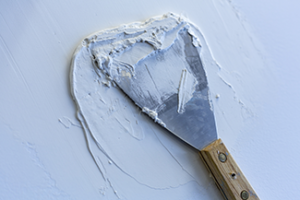 Utility knife or drywall saw. Having both can come in handy, but you won’t need both if you only own or have access to one.
Utility knife or drywall saw. Having both can come in handy, but you won’t need both if you only own or have access to one.- 12-inch straight edge
- A level
- Drywall knives (4-inch knife pictured, best used for small touch-ups)
- “I generally start out with knives ranging from 6 to 12 inches and sometimes use 1 to 4-inch knives for very small or difficult areas that the other knives won’t reach. You can’t coat around a patch with a four-inch knife. It’s not wide enough to do anything,” says Rick Thompson, Thompson’s Drywall Services, LLC, a Rosie-Certified Partner. Rick always carries a 6-inch knife to start his projects and advances to larger knives as needed.
- Coarse sponge or sandpaper
Optional:
- Acrylic caulk if the patch is matched up to another material/surface such as a countertop, shower, tile finish, etc.
- Drywall pan if a large amount of mud will be required.
- Texture spray for orange peel finishes.
- Mesh Tape
- Fast-drying joint compound (hot mud).
- “Quick set mud can be tricky. I wouldn’t recommend it for your first drywall repair, it can be a bit unforgiving,” says Thompson.
Regular Patch with Backing
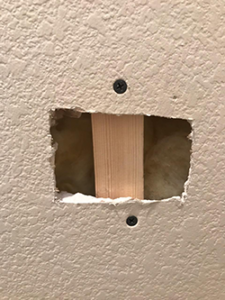 For a regular patch without backing, you will need to place a piece of wood that is a bit bigger than the hole behind it so you have something to screw into. For a doorknob size hole, simply cut a 4-inch long piece of 1×2, insert it into the hole, and while holding it tight to the backside of the drywall, set one screw through the drywall on either side of the hole. Now you have the backer piece in to screw the drywall patch to. In a real bind, you can use thick paint stir sticks. This backing trick of the trade saves you from having to cut a hole all the way to studs.
For a regular patch without backing, you will need to place a piece of wood that is a bit bigger than the hole behind it so you have something to screw into. For a doorknob size hole, simply cut a 4-inch long piece of 1×2, insert it into the hole, and while holding it tight to the backside of the drywall, set one screw through the drywall on either side of the hole. Now you have the backer piece in to screw the drywall patch to. In a real bind, you can use thick paint stir sticks. This backing trick of the trade saves you from having to cut a hole all the way to studs.
In the case there is no room to mount a backer piece, drywallers use a trick called tear patching, but this technique is not for the beginner drywaller.
Water Damaged Drywall
Water-damaged drywall can be identified in a few different ways. You may notice ripples or blisters in the paint on ceilings and walls. If the blisters don’t feel solid or if the paint starts flaking off as soon as you touch it, you likely have a water issue.
You may even find water in the paint blisters which makes your investigation easy! Other common signs are the drywall is soft to the touch and water stains/discoloration appear. Before repairing the drywall, identify and fix the source of the water intrusion.
If water is getting into the wall from rain, a sprinkler that’s too close to your house, or there’s a plumbing leak, you will probably see patches of damage on your walls near the spot of the intrusion. That’s because drywall has a paper backing, so when it gets wet, it can bubble and wrinkle, sort of like a sheet of paper does.
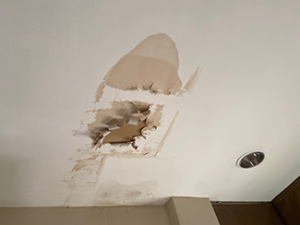 To diagnose ceiling leak damage, place a four-foot level across the damaged area. If the sheetrock has sagged more than 3/8 of an inch, the structural integrity of the drywall is probably ruined, and the whole section should be replaced.
To diagnose ceiling leak damage, place a four-foot level across the damaged area. If the sheetrock has sagged more than 3/8 of an inch, the structural integrity of the drywall is probably ruined, and the whole section should be replaced.
If there is no sagging, use an awl to randomly push into the sheetrock. You should feel substantial resistance, and the awl shouldn’t be able to penetrate the sheetrock any more than 1/8 of an inch without excessive force. However, if the awl goes through the sheetrock much deeper than 3/16 of an inch, consider replacing the section.
Repairs to areas of major water damage are best left to the pros. There could be mold , and that is best left to a professional mold remediation expert .
How To Replace A Section of Drywall
Use a utility knife to cut out the damaged area, leaving a square or rectangle so it’s easy to match up with a new patch of drywall. Look in the hole to see if the damage goes deeper than the drywall (to the studs, for example) and find the source of the leak so you can stop it before you fix the wall. Set up a fan near the hole you created and thoroughly dry the area before continuing. Cut a new piece of drywall to fit tightly into the hole you have created. You may have to back it with a piece of wood. Then attach the drywall and use a good-quality drywall tape to cover the seams.
Prime, paint and keep a close eye on it in case the damage returns. That could signal a more serious water problem than you suspected.
How To Repair The Damage
If the damage is superficial, you may not have to replace the drywall. Dry the area thoroughly, sand the blisters from the wall, and prime the spot with a pigmented lacquer product called KILZ. This product will keep the stain from bleeding through a new coat of paint. Pick it up at any home improvement store.
If the damage is severe and you need to replace a large section of drywall with a new sheet, click these links for sheetrock installation.
How Do I Tape Sheet Rock – Part 1
How Do I Tape Sheet Rock – Part 2
Home Maintenance To-Do | #DrywallRepair
###
Podcast
LIVE FROM THE SAHBA HOME AND PATIO SHOW IN TUCSON! Event Manager Alex Porta discusses the Southwestern Arizona Home Builders Association’s Spring show featuring just about everything for the homeowner. What homeowners get wrong about the water heater. And Rick Thompson of Thompson’s Drywall Services teaches you how to repair drywall damage if you’re inclined to do it yourself.
Sponsored by: Thompson’s Drywall Services, LLC
 Thompson’s Drywall Services, LLC is a small company which can provide a more affordable and personal working relationship. Although Rick is an Arizona native, he has acquired several different drywall finishing and texture techniques from one coast of the U.S. to the other. Rick has worked on many large and small projects throughout his 25+ years in the drywall industry. Rick takes great personal pride in each and every project. His work includes: acoustic (popcorn) removal, stress crack repair, patio ceiling refinishing, entertainment centers, repair to drywall damaged by water, and drywall repairs left behind from other service trade contractors.
Thompson’s Drywall Services, LLC is a small company which can provide a more affordable and personal working relationship. Although Rick is an Arizona native, he has acquired several different drywall finishing and texture techniques from one coast of the U.S. to the other. Rick has worked on many large and small projects throughout his 25+ years in the drywall industry. Rick takes great personal pride in each and every project. His work includes: acoustic (popcorn) removal, stress crack repair, patio ceiling refinishing, entertainment centers, repair to drywall damaged by water, and drywall repairs left behind from other service trade contractors.
Photo Credit
- Thompson’s Drywall
- Shutterstock
Related Content
- DIY FAQ: Drywall Damage Patch & Repairs
- DIY FAQ: How Do I Repair Blisters In Drywall Due To Water Damage?





